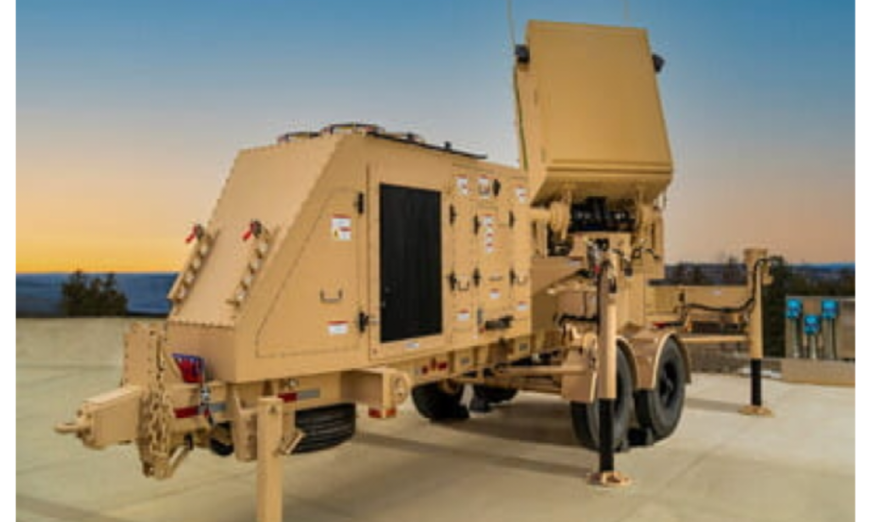The radar can detect cruise missiles and drones, fixed-wing and rotary-wing aircraft.
Surface-to-air missile systems are a crucial defense mechanism for the U.S. military to protect its strategic assets on the ground against aerial attacks.
In its quest to modernize its systems, the authorities have now awarded a $7 million contract to Raytheon to advance the development and evaluation of the firm’s GhostEye MR radar system, which is a 360-degree surveillance and fire control sensor designed to detect, track and identify a wide variety of threats.
The funding comes from a contract between the Rapid Prototyping Program of the Office of the Secretary of Defense and the SDPE office of the U.S. Air Force Research Lab.
The advanced medium-range sensor from the firm, which is part of the aerospace and defense company RTX, will help to strengthen the U.S. defense forces’ National Advanced Surface-to-Air Missile System or NASAMS; the system is manufactured by the Norwegian company Kongsberg Defence and Aerospace with RTX.
The funding aims to continue radar development, leading to operational assessment tests at White Sands Missile Range later this year. “Partnering with DoD, Air Force, and Kongsberg, we will showcase the sensor’s range of capabilities against a multitude of emerging threats,” said Tom Laliberty, president of Land & Air Defense Systems at Raytheon, in a media statement.
An advanced system.
The radar that the firm is developing for the U.S. Army is known as the Lower Tier Air and Missile Defense Sensor, or LTAMDS, and GhostEye is the first in the family of radars for the project.
The medium-range multimission radar can spot, track, and identify threats, including cruise missiles, drones, and fixed- and rotary-wing aircraft. GhostEye MR can function as a stand-alone radar and be connected with NASAMS air defense systems, which safeguard foreign air bases. LTAMDS design features three antenna arrays – a primary array on the front and two secondary arrays on the back. They work in tandem to simultaneously detect and engage multiple threats from any direction.
According to Defense News, GhostEye MR features active electronically scanned array technology that offers 360-degree coverage. At the same time, the semiconductor material made of gallium nitride to construct radar circuits enables a stronger and more sensitive, longer-range radar signal. GhostEye MR’s software-defined aperture also allows adding new features via software updates.
“The radar, introduced in 2021, provides increased range and altitude coverage to expand the defended-area capabilities of NASAMS. Additionally, GhostEye MR leverages commonality with the Lower Tier Air and Missile Defense Sensor (LTAMDS) that Raytheon is building for the U.S. Army,” said the statement.
RELATED.
Military-grade AI may now be used to spy on American civilians
Eurodrone to feature new Hensoldt radar for safe operation
Amateur Astronomers Help the Ministry of Defence Track Space Objects and Prevent Collisions
The advanced medium-range sensor from the firm, which is part of the aerospace and defense company RTX, will help to strengthen the U.S. defense forces’ National Advanced Surface-to-Air Missile System or NASAMS; the system is manufactured by the Norwegian company Kongsberg Defence and Aerospace with RTX.
The funding aims to continue radar development, leading to operational assessment tests at White Sands Missile Range later this year. “Partnering with DoD, Air Force, and Kongsberg, we will showcase the sensor’s range of capabilities against a multitude of emerging threats,” said Tom Laliberty, president of Land & Air Defense Systems at Raytheon, in a media statement.
Comprehensive testing cycle.
In September 2022, the stakeholders experimented in Andøya, Norway, to demonstrate NASAMS’ “ability to engage and intercept various advanced aerial threats using multiple Raytheon missile types and Kongsberg’s Fire Distribution Center, or FDC.”
By connecting GhostEye MR with NASAMS’ FDC using the appropriate command and control systems provided by the U.S. Air Force, the operational evaluation in September will expand upon the capabilities shown in Andøya.
According to RTX, the government support “confirms the growing relevance and demand for the capabilities of GhostEye MR, as nations around the globe look to bolster their air defense.

